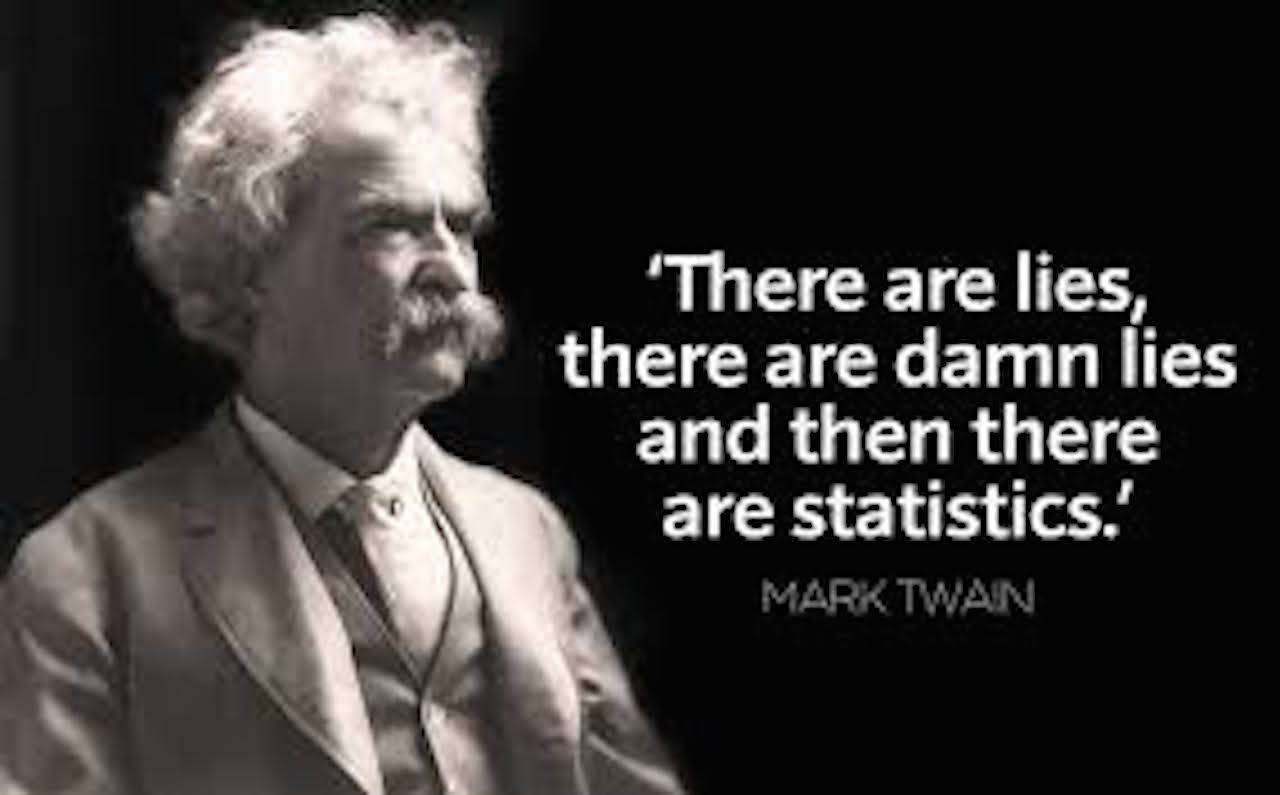Lies: “The Dow goes from 18,599 on November 9, 2016 to 25,075 [on Jan 5th 2018], for a new all time Record. Jumped 1,000 points in last 5 weeks. Record fastest 1,000 point move in history. This is all about the Make America Great Again agenda!” (Donald Trump Tweet on Jan 5,2018)
Donald Trump is 100% accurate in his recent statement about the Dow Jones Index reaching new heights, and it is something he should be proud of. This increase is a fact and it occurred on his watch. Credit is due where credit is due.
But what really caught my eye on this tweet wasn’t the record-breaking numbers, it was that the 1,000 point increase was the fastest in history. This made me wonder about the history of the Dow Jones, and how it fluctuated during the first year of the other Presidents.
Nagging in the back of my brain was the Caveman tendency to pick the stats we want to see, and then present those stats in the best light. It seems like every politician or business leader has a set of statistics that magically support their own perspective. And not surprisingly, those statistics are always presented in a way that makes it almost impossible for other people to refute. You can clearly see this when two politicians are debating. The politicians are not comparing red apples and green apples. One is talking about kiwis, and the other is talking about cabbage. There is just no comparison between the two.
At the root of this biased thinking are two things. 1) We pay more attention to data that supports our viewpoints, and will ignore data that contradicts it. 2) How statistics are framed has an enormous impact on how the information is processed (even if the underlying information is the same)
While we wrote in detail about the Confirmation bias in a previous post, the second point is just taking advantage of the fact that most people do not have detailed knowledge of statistics. Basic figures like the total increase in D.J. points are easier to grasp than the percentage increase in D.J. points. See for yourself. Here are the D.J. point increases/decreases for the last X6presidents in their first year in office:
| Total Change | |
| Trump | 6,476 |
| Obama | 1,990 |
| W. Bush | (-573) |
| Clinton | 447 |
| H.W. Bush | 585 |
| Reagan | (-97) |
Lies, Damn Lies, and Statistics
Clearly Trump is the winner by a huge margin, and George W. Bush is the clear loser. And if we stopped there, we would have an idea of how the stock market performed for each of the presidents, but it would be distorted image. The stock market doesn’t restart at 0 for each president, it builds from previous years. Just look what happens when we include the % change of the D.J. points.

Now all the sudden, Obama and Trump are a lot closer in their performance (4% difference seems better than 4,486 points). And look at Reagan and W. Bush. Originally it looked like Reagan had a bad year, but not as bad as losing 573 points like W. did. In reality, Reagan had a worse year. Comparing totals across the presidents just doesn’t make sense. You must compare something that is relational, like percentage change. Only then can you see that the ‘record breaking 2017’ was more a by-product of our history and not the improvements made by Trump.
So, what can we do about this. First off, we need to destigmatize statistics. While it is true that Data Scientists are becoming critical talents thanks to Big Data, the average person does not see statistics as their friend. And I know why. Statistics is usually taught in some of the most boring ways. You spend all your time learning the math behind the stats, and how to calculate them. The reality is that only your computer needs to know the equations. What we should be spending more time on is understanding how each statistical tool can help solve different questions or problems we face.
We also need to change our mindset when hearing facts and figures. When I ask my son what happened in Kindergarten that day, I know I am not getting the whole story. I am just getting the parts he wants to share. It is up to me to ask probing questions to understand what really happened. The same thing should be done with every politician and business leader. Assume that they are only sharing the part of the story that supports their viewpoints. Try and find contrarian data, and compare the different arguments.
If you don’t have a basic understanding of statistics and an inquisitive mind set, then you are just setting yourself up for disappointment. You may be super excited by your CEO saying that you have had another record break year, only to find that the company only improved by 0.1%.
Lies, Damn Lies, and Statistics
If you liked this article, you can be a Caveman too – Follow us in LinkedIn or Facebook
Highlight and tweet – The root of biased thinking is that we look for data that supports our viewpoints, and that how statistics are presented impact how we believe them. @Caveman_in_suit https://wp.me/p9toKb-57

Leave a Reply